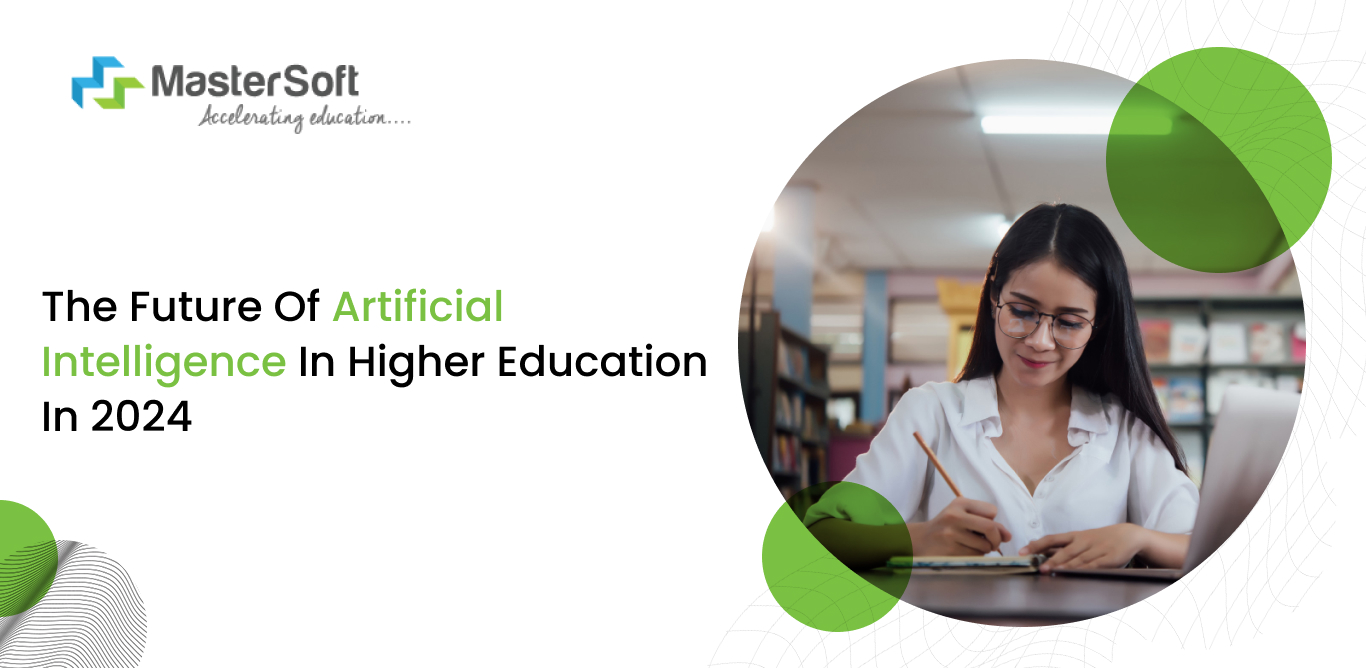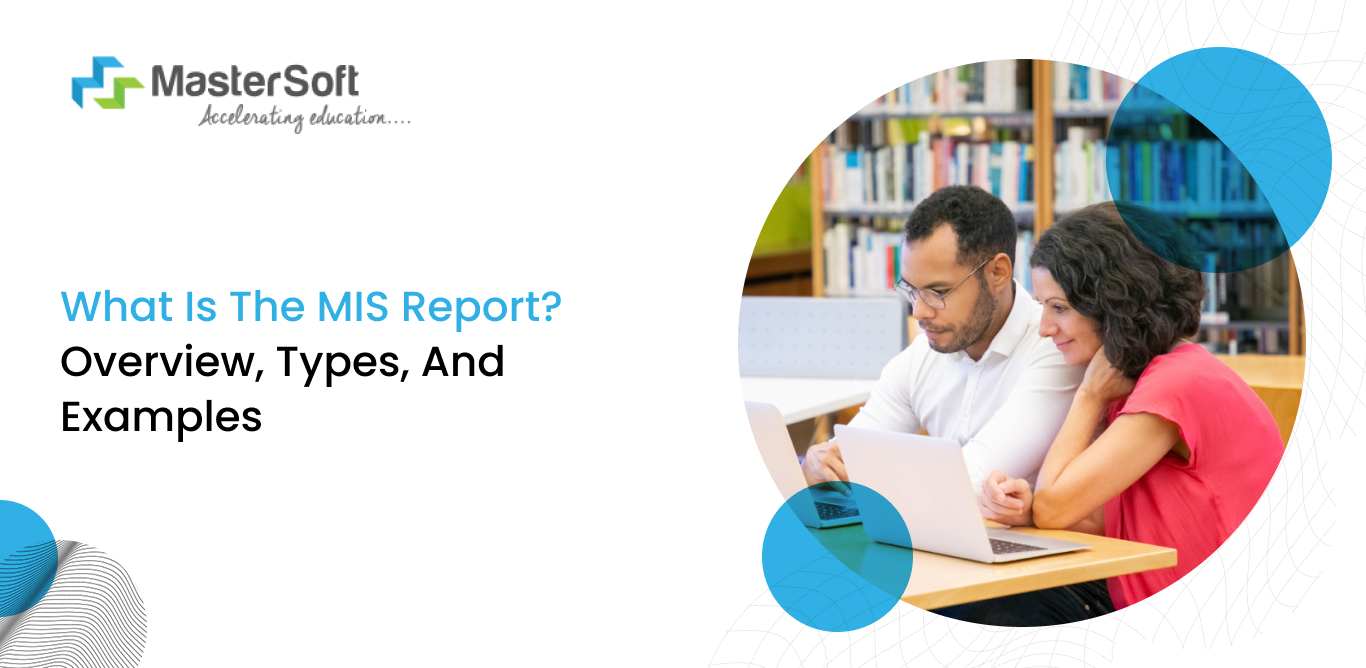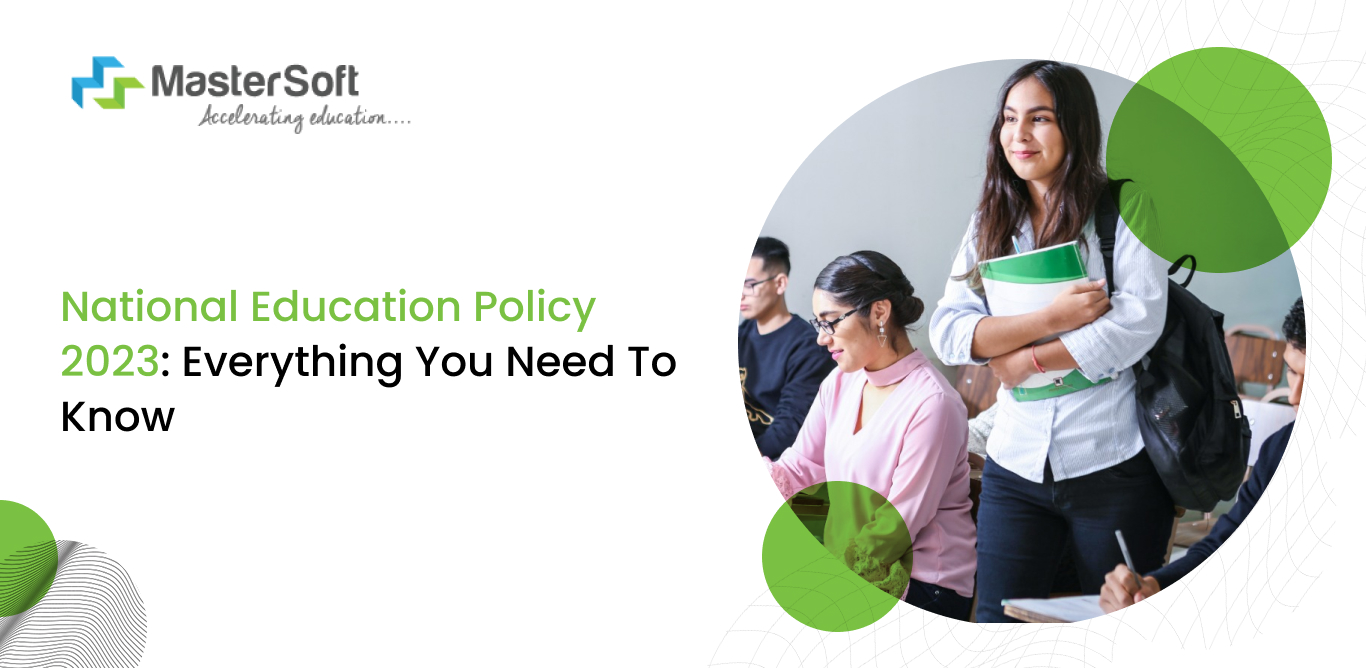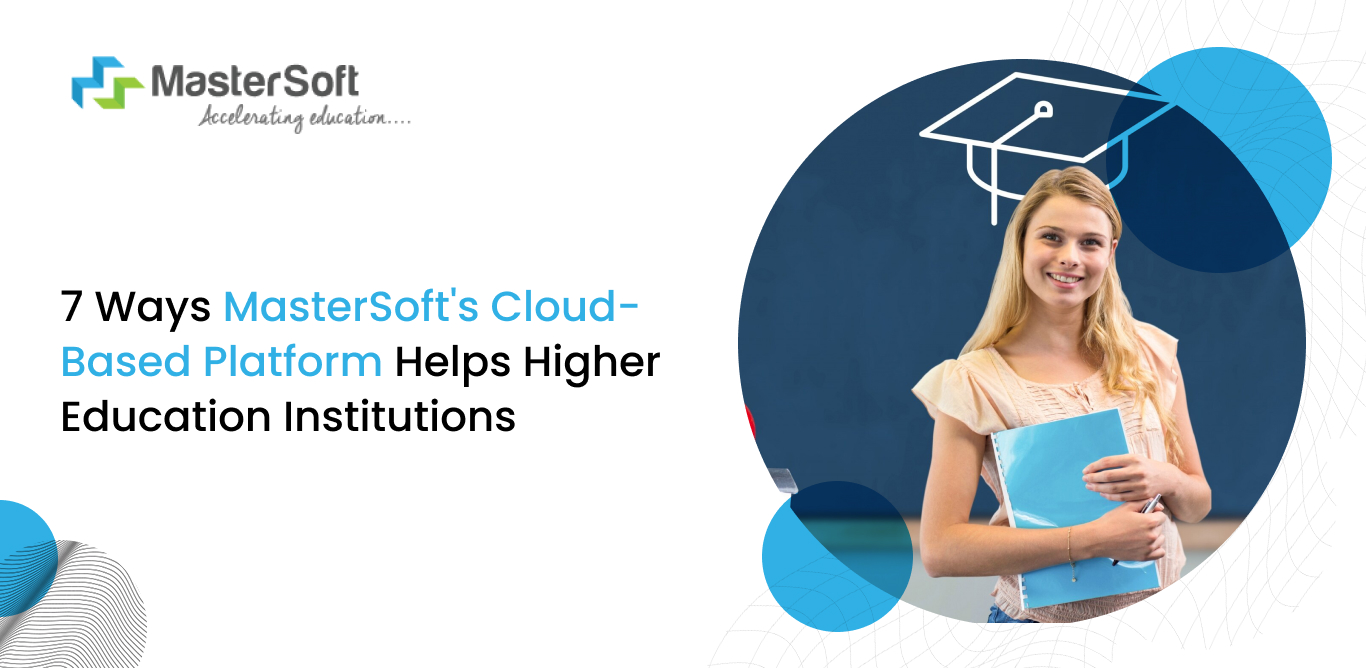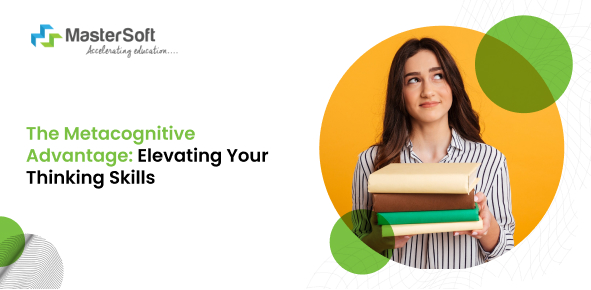24, June 2024
With increasing innovation and technological advancement, each industry has managed to adapt and reap benefits. Likewise, the education sector has advanced by leveraging tools and solutions that accelerate institutional operations.
The aim to improve administrative processes and cater to students’s learning requirements has led to an increased demand for AI in education. It adds value to students’ learning experiences through customised learning content and materials.
What is AI in education?
AI, or artificial intelligence in education refers to the implementation of cutting-edge technology that enhances teaching and learning activities. Students can use different learning tools that can help them rectify mistakes and assist them in assignments and projects.
Similarly, teachers can use AI tools to develop question papers and interactive exercises like quizzes to stimulate learning. Furthermore, they can create and conduct assessments that examine a lot more than theoretical knowledge.
For instance, AI proves to be a significant assistive technology that enables teachers to develop exams that test practical understanding. In fact, there are several ways in which AI contributes to education; hence, it is only fitting to take a look at it.
How many students graduated in the last academic year? What is the enrollment percentage for a particular course? Which programs witnessed increased admission in the last two years? Institutes seek answers to these questions to obtain necessary information and improve core administrative functions.
However, manually collecting and maintaining student data throughout the academic year is exhausting. That is why an MIS report is an appropriate solution through which stakeholders can obtain admission data, attendance data, financial information, etc.
What is an MIS report?
MIS, or Management Information System report, is comprehensive data on student enrollment, academic performance, examinations, online classes, etc. Institutes use the MIS report or education MIS report software to retrieve in-depth information.
Furthermore, it is an effective tool that proves to be helpful for teachers, administrators, and other stakeholders. For instance, teachers can use the tool to streamline student data, helping to track students’ performance.
The accounts and admin departments can check the financial data through the centralised platform, helping to facilitate convenient audit processes. On the other hand, institute leaders or management can monitor staff and faculty workflow and identify challenges.
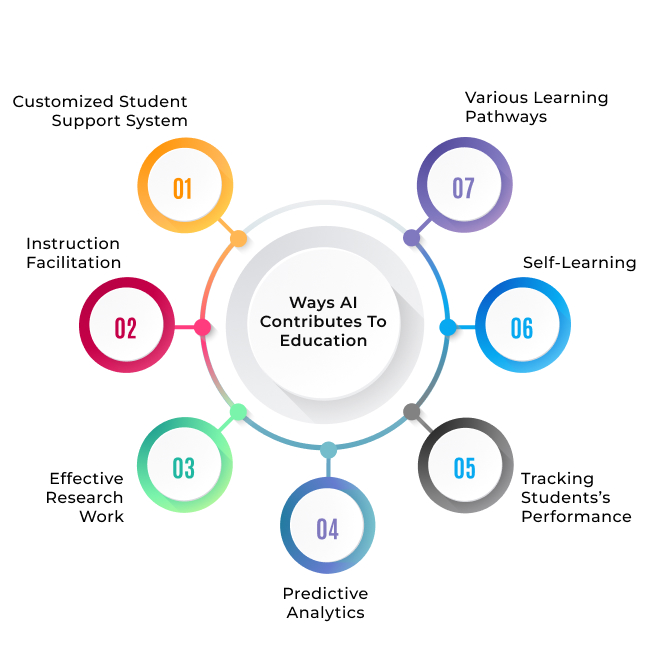
1. Customized Student Support System
A gradual shift from a teacher-centric to a student-centric method is the foremost approach that requires elaborate planning and execution. It includes incorporating an appropriate curriculum and activities that engage students.
However, central to this approach is providing a customised student support system, which could be challenging. Why? The most obvious reason is that it can get difficult to keep an eye on all students individually. That is where AI can provide the necessary help through the following:
- Students can interact with multifaceted subject matters, which are in text, audio, and video, helping them have an interactive learning experience.
- AI-powered tutoring systems facilitate instruction as per students’s needs and queries.
- AI-data-driven education provides adequate solutions that solve various learning difficulties. Consequently, it promotes diversity and equal access to educational opportunities for all people.
Role Of AI And Other Modern Technologies In Higher Education In 2023
2. Instruction Facilitation
‘’AI will replace all manually intensive tasks and bring about the technological revolution that will impact all our lives’’. Many experts and tech enthusiasts have made such predictions, little sparks of which we can already see occurring.
At the same time, one cannot deny that no matter how technologically reliant we become, we still need human intervention, especially in education. Why? Machines can store vast amounts of data and provide all the answers, but they cannot replace a teacher.
Teachers are indispensable because they nurture and guide students; however, they can use AI to optimise administrative tasks. In fact, the future of AI in education will focus on making teaching and learning more engaging and interactive.
Moreover, in the current scenario, teachers can use AI solutions to design courses and draft the curriculum according to the guidelines. Also, they can develop various assessments, auto-grade them, and provide individualised feedback to students.
3. Effective research work
Group projects and assignments in school and research work in colleges and universities are important academic activities. They allow students to embark on a journey of independent learning, helping to boost their critical thinking.
However, hours or even days go into finding relevant information; therefore, they can take advantage of the AI tools. In fact, AI in education is particularly useful for the following:
- Finding and collating information from sources such as websites, journals, and published papers.
- Suggests papers and resources according to the student’s interests and topics.
- It helps to extract figures, tables, and other data.
- Assists in collecting, managing, storing, and accessing data, helping to automate the manual tasks of sourcing and preparing relevant data.
- Edits texts and researches content material in real time by proofreading, fixing spelling, and correcting grammar and punctuation.
4. Predictive Analytics
How will the student perform in the next exam? Will he or she be able to progress in the next few months? Is his attendance pattern going to change? Addressing such questions and finding accurate answers is crucial to determining the student's outcome.
More importantly, AI entails a broad range of capabilities that imitate artificial intelligence processes with machines. Also, it uses predictive analysis to collect, observe, and analyse historical data to predict future outcomes. As a result, it provides multiple benefits, such as:
- Analyses student performance data and behaviour and provides insight into their future performance.
- Identify at-risk students through their attendance record and the number of missed classes or lectures.
- Generates data and helps to focus on trends in skill development needs, educational preferences, and student demographics.
- It helps to figure out students’ capability of attaining the learning outcomes through detailed academic performance reports.
The future of AI in education indicates increased usage of predictive analytics to assess students' conduct and behavior. Furthermore, it will use the insights from the data and report to identify struggling students.
5. Tracking students’s performance
Creating lesson plans, selecting and implementing suitable methodologies, and monitoring their outcomes are central to teachers’ responsibilities. Carrying out all of these activities takes considerable time and effort.
That is where AI tools can prove to be adequate assistive technological solutions, helping to accelerate teachers’ activities. At the same time, they can use the tools to keep track of students’ performance.
Additionally, they can figure out specific pain points for students and implement strategies to help them overcome issues.
7. Various Learning Pathways
The current teaching and learning mechanisms have moved beyond the traditional ones by integrating modern methods. The use of multimedia is a crucial strategy to engage students and motivate self-directed learning.
For example, using gamified content and learning materials in education is an excellent example that will continue to boost learning outcomes. Furthermore, multimedia learning resources cater to all learners.
Therefore, different students connect with audio, visual, and textual modes, depending on their preferences and interests.
Important Points to Remember
Integrating AI into education has multiple benefits; however, teachers and institutes need to consider the following factors:
- Establish strict rules and policies regarding the use of AI to avoid plagiarism in writing and completing assignments.
- The aim should be to use the technology strategically instead of replacing human expertise in crucial activities like teaching.
- Strike a balance between AI and human intervention, as both are interdependent and strive to attain academic goals accordingly.
- Promote AI literacy through staff and faculty development programmes so that they can use the tools effectively.
- Mandate AI usage according to the latest regulations and ethical considerations in terms of student and data privacy and security.
Key Takeaways,
Artificial intelligence, or AI, will play a considerable role in the education system by providing mechanisms to measure student learning. It is a cutting-edge, modern technological solution that provides customised content and recommendations.
Teachers can adapt their instructional methodologies by gaining insight into students’ performance. They can obtain detailed reports and ascertain their future outcomes through predictive analytics.
Want to enhance students’ thinking abilities but don’t know where to start? Learn More
Mobile: 08448010216
Email: janki.somani@iitms.co.in

